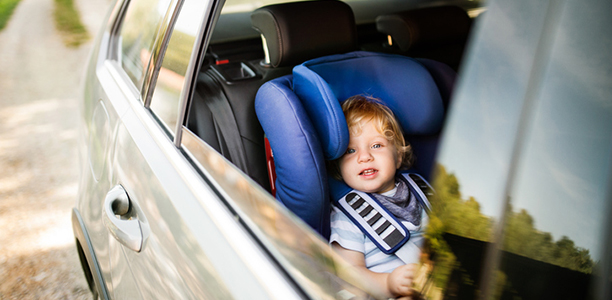Booster seats, car seats and seat belts are equally effective at saving the lives of children, while booster seats top the others at reducing minor injuries specifically among children ages 8-12, according to Montana State University economist D. Mark Anderson.
Anderson recently published two studies that investigated booster seats. One looked at their effectiveness relative to seat belts alone among children ages 8 to 12 in Washington. The other asked if booster seats were more effective than car seats or seat belts alone at reducing traffic fatalities among children ages 2 to 9 across the nation.
Despite their differences in scope, the studies came to the same conclusion regarding fatal injuries “over and over and over again,” said Anderson, an associate professor in MSU’s Department of Agricultural Economics and Economics in the College of Agriculture.
“All three forms of restraint appear equally effective at reducing the likelihood of fatality,” Anderson said. “There was even some evidence that booster seats may be the least effective form of restraint for children 2 to 5 years old.”
The study warned against moving children too early into booster seats and adult seat belts.
“Because belt positioning is critical for the safety of the child, premature graduation from a child safety seat to a booster seat or from a booster seat to a seat belt could be hazardous,” the study reported.
Booster seats are designed for children who are too large for car seats and too small for adult seat belts. They are meant to prevent injuries by elevating children so their seat belts are properly positioned. Instead of crossing the soft tissue of the neck, for example, seat belts should cross the bony clavicle.
Anderson said he was inspired to investigate booster seats for children after reading a 2008 paper by University of Chicago economist Steven Levitt that compared the effectiveness of car seats and adult seat belts. That paper was based on data collected prior to the boom in booster seats.
“In an effort to increase booster seat use among children, the National Highway Traffic Safety Administration is encouraging state legislators to promote stricter booster seat laws, yet there is a paucity of information on booster seat efficacy relative to other forms of restraint,” Anderson said in his most recent paper.
Anderson published his paper, “Booster Seat Effectiveness Among Older Children: Evidence from Washington State,” in the American Journal of Preventive Medicine in August. His paper “Are Booster Seats More Effective than Child Safety Seats or Seat Belts at Reducing Traffic Fatalities Among Children?” is forthcoming at the American Journal of Health Economics and was posted in November on the MIT Press website.
“I am very excited that the study is now coming out, as I believe the topic is extremely important,” said Sina Sandholt, co-author of the national study. “Child safety seat laws-booster seat laws, as well as informational campaigns on the topic, ought to be backed by evidence, and I believe we are adding something important to the literature here, which I hope will influence policy decisions on the subject in the near future.”
(Source: Montana State University, American Journal of Preventive Medicine)










